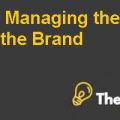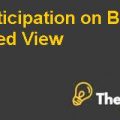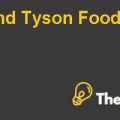
Introduction
Mergers and Acquisitions
In the fields of strategic management, corporate finance and management, mergers and acquisition (M&A) are important features of it. It encompasses the process of buying, selling, dividing and combination of unique companies and same entities that facilitates an organization in order to grow significantly in relevant sectors. Corporate restructuring and mergers and acquisitions are a vital section in the world of corporate finance. Merger refers to the combination of the companies who decides to work together for the sake of profit maximization and long term sustainability. Companies decide mergers and acquisitions as per the need and demand of the business (Mark, 2010. Pp. 35)
Tesco PLC is a common merchandizer and a multinational grocery dealer, headquarters in Hertfordshire, UK and Cheshunt. Tesco is the second major retailer in the world after Walmart as far as profits and revenues are concerned. Tesco has stores all around in the world at global level in 12 different countries across Asia, Europe and North America. It is the market leader in the section of retail business in the UK. The market share of Tesco is around 30% of market share in the state of the Republic of Ireland, Thailand and Malaysia.
Fresh and Easy
In the western United States, Fresh & Easy Neighborhood market is a grocery store chain, and the headquarters are located in El Segundo and California. It is owned by Yucaipa Group of Companies since the November 2013. It was the third major retailer and a subsidiary of Tesco located in the United Kingdom. It had various plans and strategies in order to grow the business in the long run, in November 2010, the first store opened after a delay in the second quarter of 2008. Though there were 200 stores in Neveda, California and Arizona by December 2012, in April 2013 the company confirmed that it was performing badly in the US market. The company occurred a cost £ 1.2 billion during that period.
Tesco announced that they were converting operations and ownership of around 150 stores to supermarket owner Ron Burkle’s Yucaipa Group of Companies. Even though the sales of the company increased a lot, but still the cost of the Tesco had a negative impact on the business as its costs around £150m.
Market share in United Kingdom:
Tesco was effectively participated in the industry and compete efficiently in the industry, as a result it become fourth top biggest retailer in the world after Wal-Mart, Carrefour, and Home Depot. Tesco increased its standards a lot in the year 2007, and moved forward of Home Depot, due to the economic recession in the United States and decrease in the sales of Home Depot. According the estimations and forecast from the Kantar World panel, the share of Tesco in the UK grocery market for the upcoming three months in 2012 was 30.2%, decrease from 30.6% in the 12 weeks in the year 2011.
| Retail stores | Market share | Increase or decrease |
| Tesco | 30.2% | |
| Asda | 18% | |
| Sainsbury’s | 16.8% | |
| The cooperative food | 7% | |
| Morrisons | 12.2% |
Failure of fresh and easy:
Tesco with extensive presence and establishment in the U.K market fails to establish itself in the American Market. Tesco is taking over by the Ron Burkle’s Yucaipa Cos. Which is a billionaire company. Tesco (Money Watch) handed Burkle’s their more than 150 stores and also millions of dollars to sell its business to Burkley. This reflects the bitter nature of the deal. Not only was this, but the deal was coupled with Tesco (TSCDF) paying Burkley additional costs and layoffs of many of its permanent staff members. The Company also had to shut several of its stores reflecting the gross and exorbitant failure of Tesco. Given Tesco’s performance in other markets, e.g. European and Chinese market, it seems almost unpredictable that what would have cost the company top fail in succeeding in the American market. Nevertheless, it is seen that most of the companies that move its operations from U.K. market in the U.S.A market are more likely to fail.
Given the nature of venture that was being launched by Tesco, was not acceptable to the U.S mainstream. At the time of the launch of the new venture by Tesco, back in 2007, the consumer spending patterns were on the declining front in the U.S.A. The societal preferences differ widely amongst the European and American consumers. Not only were this, but in 2007, the consumers’ preference for adventure with the food also on the lower side, which contributed to the Tesco’s financial setback in the American market. The RTE (Ready-to-Eat) meals required high levels of consumption and spending patterns also due to the life of the packaged meal. This suggested that the American consumers need to prepare themselves for something that was for sure not deep-seated yet it was new. This suggests that Tesco.................
This is just a sample partial case solution. Please place the order on the website to order your own originally done case solution.












